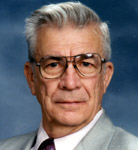Aspects of Applied Embalming Theory

John A. Chew's blog
Understanding Basic Sanitation and Embalming Practices (Part 2)
Posted by John A. Chew on November 1, 2014
Sterilization of embalming instruments is one aspect of aseptic technic that is not practiced as a regular part of the embalming process. This does not mean that such technics are not essential, it’s just that some individuals do not recognize or understand the potential dangers associated with the handling and care of a dead human body. Disinfection of the body and the preparation room/equipment is an important part of the pre-embalming process. Primary disinfection begins with the removal of the body (first contact).
Antisepsis of the hands and arms begins prior to handling any body and before dressing with personal protective clothing.
At the foot end of the table, there is a custom designed biochem filtration system to neutralize waste prior to entry into the sewage system. Biological waste seems to equate with daily household body waste and needs to be identified. Potential hazards begin with the actual embalming process centered on the methodology practiced. A sluice with a holding capacity of one gallon should be fitted with a flusher and a chemical injector.
Ventilation fans should be no higher than 36 inches above the floor at the foot of the preparation table. The ventilation system and/or air conditioning should be separate from all other areas of the funeral home. Floors should be seamless material and extended halfway up the walls with a central drain.
Extra-large four-foot doors or double doors would make for easy access. The prep room should be off limits to everyone except authorized individuals. Protective attire should be required of all occupants.
Mobile equipment allows for the practitioner to maintain a clean and safe working area which is architecturally void of recesses, corners or places for potentially hazardous microorganisms to hide. Once the equipment is removed, the area should be thoroughly cleaned with a hose and disinfectant.
The use of specialized steaming and fogging equipment is becoming common among health paraprofessional establishments to reach normally non-accessible areas. Steaming and fogging of removal cars and prep areas could be taken as an extra precaution on a regular basis to protect service and licensed personnel.
The preparation room contains the funeral establishment’s work area necessary for licensed/trained personnel to carry out the embalming activities. The area allocated is dependent on the size and type of establishment and the type of services performed. There are establishments that provide only sanitary treatment and those that provide sanitation and embalming. Bodies may only be sanitized or disinfected and placed under refrigeration for legal or religious reasons.
A dressing room, including showers, lavatory, toilets, mirrors and locker space adequate for each employee’s street attire, should be part or adjacent to the preparation room. This room should be equipped with a scrub sink which has automatic electronic, foot, or elbow controls. Optional equipment is a washer and dryer.
A supply, storage, and sterilizing room should be easily accessible from the preparation room for operational convenience. Numerous miscellaneous supplies need to be stored and inventory stock levels need to be established and maintained.
Adequate supply of personal protective equipment (PPE) should be available to all employees. Two loose leaf 8½ x 11 notebooks for Material Safety Data Sheets (MSDS) should be maintained. There should be one in the preparation room and one in the office.
Properly fitted respirators should be available adjacent to the preparation room for quick retrieval in the event of excessive fumes or an emergency spill.
Part 3 will deal with the essentials of thanotechnological sanitation.
Comments: